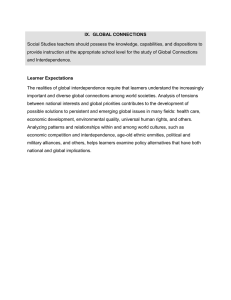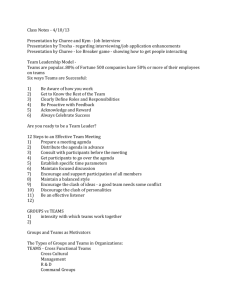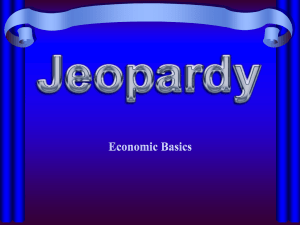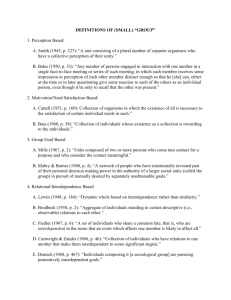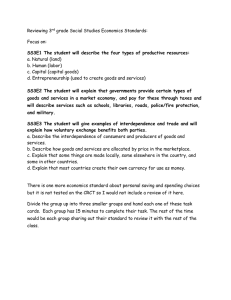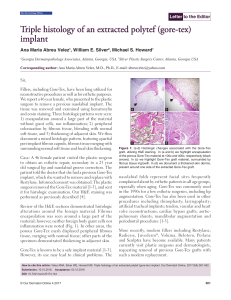Imagining Social Policy Conference October 13-15, 2005 Vancouver, B.C.
advertisement
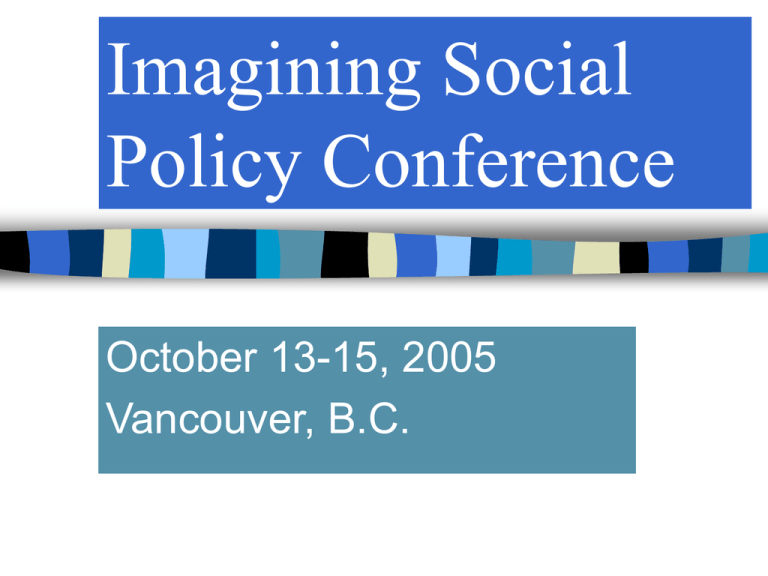
Imagining Social Policy Conference October 13-15, 2005 Vancouver, B.C. Enhancing Social Policy in Canada: The Gore-tex Approach Rhonda S. Breitkreuz, Ph.D., Deanna L. Williamson, Ph.D., Department of Human Ecology, University of Alberta Acknowledgement: Support for this research was provided by the Alberta Heritage Foundation for Medical Research and the Social Sciences and Humanities Research Council of Canada Purpose Propose an “ideal” public policy approach which bridges aspects of contemporary welfare state orientations (I.e., the social investment state and the social protection state) Policy Context Social protection social investment (Jenson, 1997) • Social Protection State – Safety net • Social Investment State – Trampoline (Saint-Martin, 2000) – Welfare-to-work Situating the Discussion The Self-Sufficiency Trap – the day-to-day experiences of welfare-to-work programs on low-income mothers with young children – A citizenship framework Findings – The promise – The reality – Surprise: Participants like welfare-to-work Welfare State: Agency/structure waltz “When does need entitle people to make a claim against the collective”? (Robertson, 1998, p. 1426) – Is income redistribution a moral responsibility or morally problematic for society? The problem of need (Robertson, 1998) Dominated by two discourses with individualistic focus: – Therapeutic language – “Rights talk” New approach which recognizes mutuality or relationships – Moral economy of interdependence Interdependence “our very individuality exists only as a result of our embeddedness in a network of relationships both private and public. None of us is totally independent of our context – social political and economic; rather, we are located and live within complex webs of mutual dependence or interdependence (Robertson, 1997, p. 436) Rethinking the Agency/Structure Waltz Weather analogy – A good winter, like social structures: opportunity and constraints – Individual overcomes constraints to engage in opportunities, with considerable resources – Ability to engage one’s agency depends upon external resources The Gore-tex Approach Social Protection •Protection Social Investment •Opportunity Moral Economy of Interdependence Layered Approach Layer One: Citizen’s Basic Income (McKay, 2001) Universal logic (Jenson, 2004) – Progressive universalism • “Some for all but more for the poorest” (Pawlick & Stroick 2004) – Less vulnerable to changing political tides CBI especially important for women – Lower earnings – Caring responsibilities – Single-mother households Layer Two: Social Investment Labour & employment strategies Education Childcare policy Early childhood development policy Discussion Social protection is necessary, but not sufficient Although the Citizens’ Basic Income is not a new idea, it merits revisiting to enhance the current ‘investment’ policy orientation which, on its own, excludes many marginalized women

